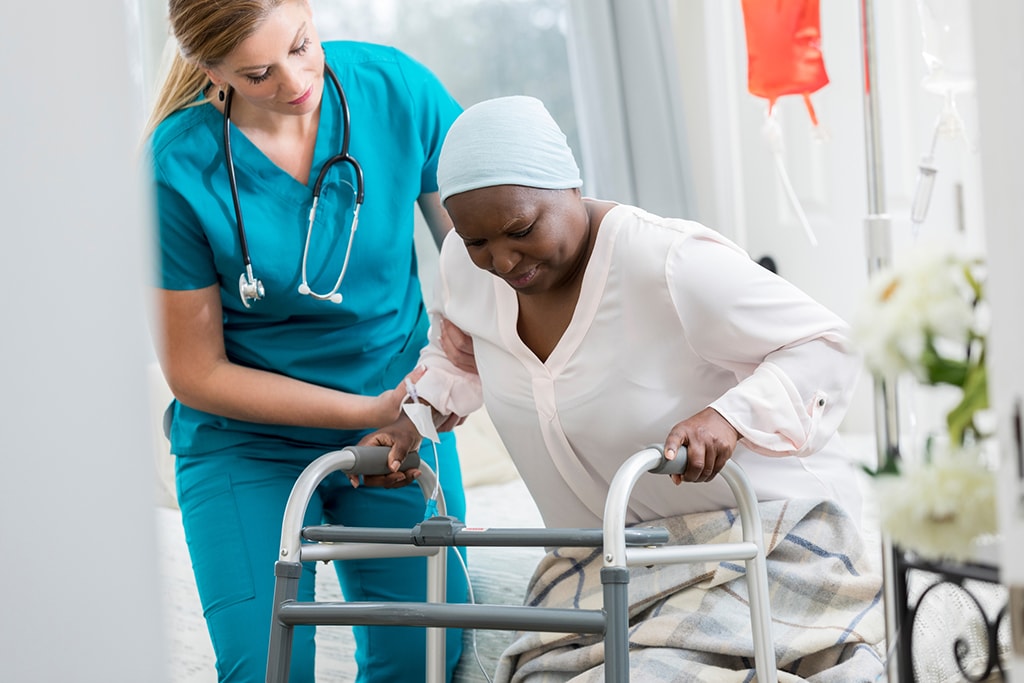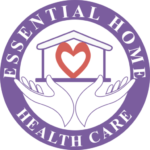Essential Home Health Care Home Health Programs
Fall Reduction Program

Falls are common in older adults, but they are not a normal part of the aging process. Our Fall Reduction Program can assist you in lowering your risk of falling in the comfort of your own home.
Highlights of the Fall Reduction Program
- Evidence-based clinical practices ensure that you receive high-quality care that is supported by science.
- An interdisciplinary approach that allows you to work with a diverse team of professionals to address your fall risk factors.
- Expert care at home, where 75 percent of falls occur
- Model of patient empowerment that encourages you to take an active role in fall risk reduction.
How Home Health Care Aids in the Prevention of Falls
We assist in addressing a variety of home fall hazards, including:
- Musculoskeletal problems – Musculoskeletal problems include problems with your muscles, joints, nerves, discs, blood vessels, and other parts of your musculoskeletal system.
- Cataracts, glaucoma, and vision loss are examples of visual disturbances.
- Memory loss, amputation of a limb, or difficulty walking, seeing, hearing, or problem-solving are all examples of functional and cognitive impairments.
- Chronic illnesses – Chronic illnesses that can impair your balance, such as Parkinson’s disease, diabetes, and dementia
- Pharmaceuticals – Sleep aids, blood pressure medications, and other medications that may throw you off balance
- Home safety – Remove potential trip hazards such as clutter, throw rugs, and long electrical cords.
Goals for Fall Prevention
We want to assist you in the following ways:
- Recognize your fall risk.
- Learn how to take good care of yourself.
- Enhance your quality of life
- Avoid falls that could have been avoided.
- Maintain as much independence as possible while remaining safe at home.
- Reduce the number of expensive hospitalizations
Is Our Fall Reduction Program a Good Fit for You?
If you meet the following criteria, the Essential Home Health Care Fall Reduction Program may be right for you:
- Have fallen in the last year
- When standing or walking, you may feel unsteady.
- Concerned about falling
Tripping or slipping, as well as falling back into a chair or onto a bed when attempting to get up, are examples of falls.
What Happens If You Fall?
Falls are the leading cause of death and injury in people aged 65 and up. The long-term ramifications can be life-changing.
- Falls can result in hospitalizations and permanent disability. One in every five falls results in a head injury or a broken bone. Every year, over 300,000 older people suffer from hip fractures. Following an elderly fall, it is also common to break the thigh, pelvis, spine, arm, leg, hand, and ankle bones.
- Fall injuries can make it difficult to stay active and live independently. If you are over the age of 75 and fall, you are four times more likely to be admitted to a skilled nursing facility. Even if you are able to stay at home, falls can have a negative impact on your quality of life.
- Fear of falling may prevent you from leaving the house and remaining socially and physically active. When you move less, it becomes more difficult to perform daily tasks such as bathing, cooking, and shopping. Isolation and inactivity increase your chances of developing depression and anxiety. All of these changes can make you more prone to falling.
Our Mission
To assist our clients in maintaining a safe and healthy home environment conductive to achieving the highest level of functional independence in the comfort of their homes.
